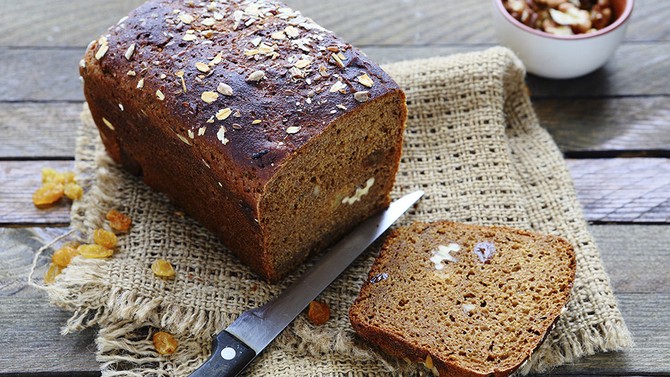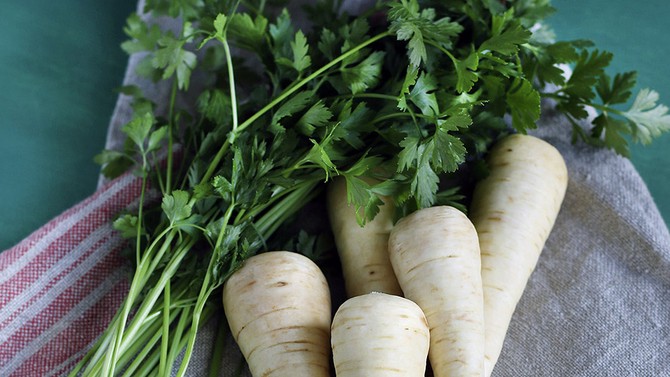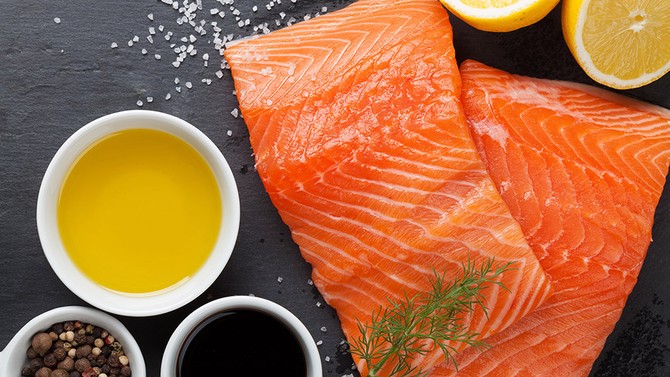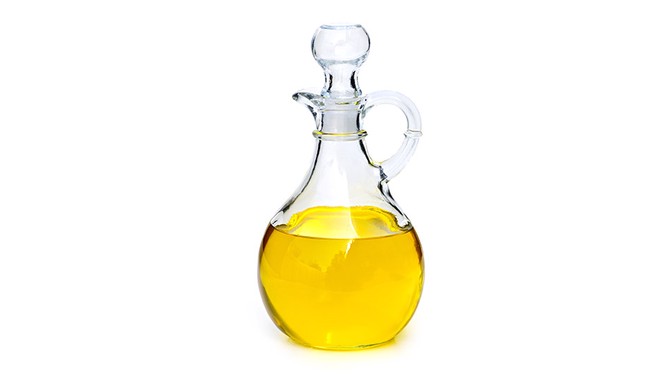4 Ways Eating Like a Viking Can Help You Lose Weight
A fresh take on gud-for-you dining.
By Leslie Goldman

Illustration: Javier Perez
For years, doctors have been singing the praises of the Mediterranean diet for its link to increased longevity and healthier hearts. But research now suggests we might do well to set our sights farther north: The New Nordic Diet (NND)—think Mediterranean but with hardier vegetables and more wild game—could lower blood pressure and cholesterol and help you shed pounds.
A 2014 study in the American Journal of Clinical Nutrition found that obese Danish adults following the NND not only consumed, on average, 422 fewer calories per day than those eating traditional Danish fare (similar to standard U.S. meals of refined grains, meat, dairy and sugar), but they also reported feeling more satisfied. Eating the NND way may also reduce the risk of developing type 2 diabetes by an estimated 20 to 40 percent, according to recent research. And perhaps the most impressive finding for noshing Nordic-style: When researchers followed more than 55,000 Danish women and men for 12 years, they discovered that those who ate substantial amounts of six characteristic NND foods (including cabbage, rye bread, oatmeal and root veggies) had a 25 to 36 percent lower risk of death than those who ate the least. Hungry? Get started with these new diet rules.
A 2014 study in the American Journal of Clinical Nutrition found that obese Danish adults following the NND not only consumed, on average, 422 fewer calories per day than those eating traditional Danish fare (similar to standard U.S. meals of refined grains, meat, dairy and sugar), but they also reported feeling more satisfied. Eating the NND way may also reduce the risk of developing type 2 diabetes by an estimated 20 to 40 percent, according to recent research. And perhaps the most impressive finding for noshing Nordic-style: When researchers followed more than 55,000 Danish women and men for 12 years, they discovered that those who ate substantial amounts of six characteristic NND foods (including cabbage, rye bread, oatmeal and root veggies) had a 25 to 36 percent lower risk of death than those who ate the least. Hungry? Get started with these new diet rules.

Photo: Olha_Afanasieva/Thinkstock
Give rye a try.
With two to three times the fiber of white bread, rye bread takes longer to chew as well as to digest—meaning it keeps you feeling full, satisfied and regular. Rye is also rich in manganese, a mineral that helps strengthen bones and connective tissue. One thing to keep in mind: American rye bread tends to be lower in fiber than foreign-made rye, so look for loaves with whole kernel rye or whole grain rye flour on the ingredients list. Karen Ansel, a registered dietitian based in New York, recommends the Mestemacher brand, which has six grams of fiber per slice.

Photo: violleta/Thinkstock
Return to your roots.
Root veggies like potatoes, beets, rutabagas and parsnips are rich in slow-digesting complex carbs and fiber (a medium-size baked sweet or white potato with the skin on delivers nearly four grams). Red beets have an added benefit: Their color comes from pigments called betalains, antioxidants that help bind toxic substances in cells and usher them out of the body. Make a root veggie coleslaw by tossing shredded cabbage, carrots and beets with canola oil and white wine vinegar.

Photo: karandaev/Thinkstock
Go wild with protein.
If elk and venison aren't high on your grocery list, you can still eat the Nordic way with grass-fed beef, pork, or lamb. (Game is often available at local farmers' markets and even Costco is carrying bison these days.) "Think of these foods as sides, not the star of the meal," says Ansel. "Limit them to a few times a week, a few ounces per serving." Enjoy four ounces of oily fish (salmon, herring, mackerel) three times a week, and don't forget low-fat dairy for calcium-rich protein. A few breakfast ideas: Start your day with a parfait layered with nonfat yogurt, berries and oatmeal; top salmon with a generous dollop of cucumber-dill yogurt; or, if you're in a hurry, grab a cup of skyr, an Icelandic yogurt.

Photo: Elena Elisseeva/Thinkstock
Get an oil change.
The NND replaces olive oil with canola oil (also called rapeseed oil); it has a more neutral taste and boasts even more heart-healthy omega-3s. Of all the vegetable oils, it's the lowest in saturated fats—7 percent compared with olive oil's 14 percent. And consuming canola oil daily (in place of a similar amount of saturated fat) has been shown to cut coronary heart disease risk. Because of its high smoke point, it works well for stir-frying, grilling, baking and sautéing; use it to roast parsnips and potatoes or sauté leafy greens.
From the September 2015 issue of O, The Oprah Magazine

